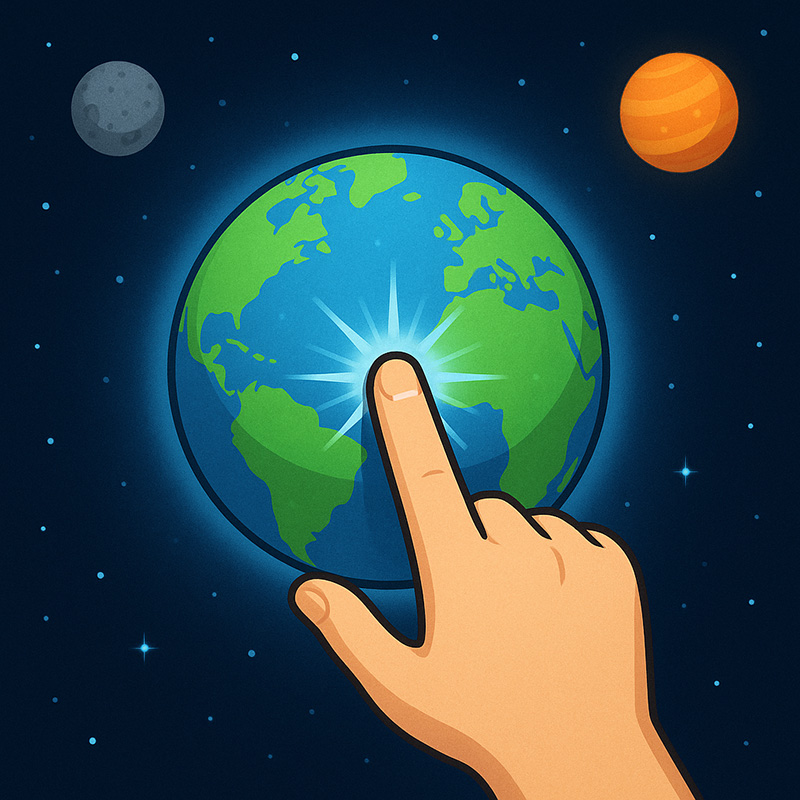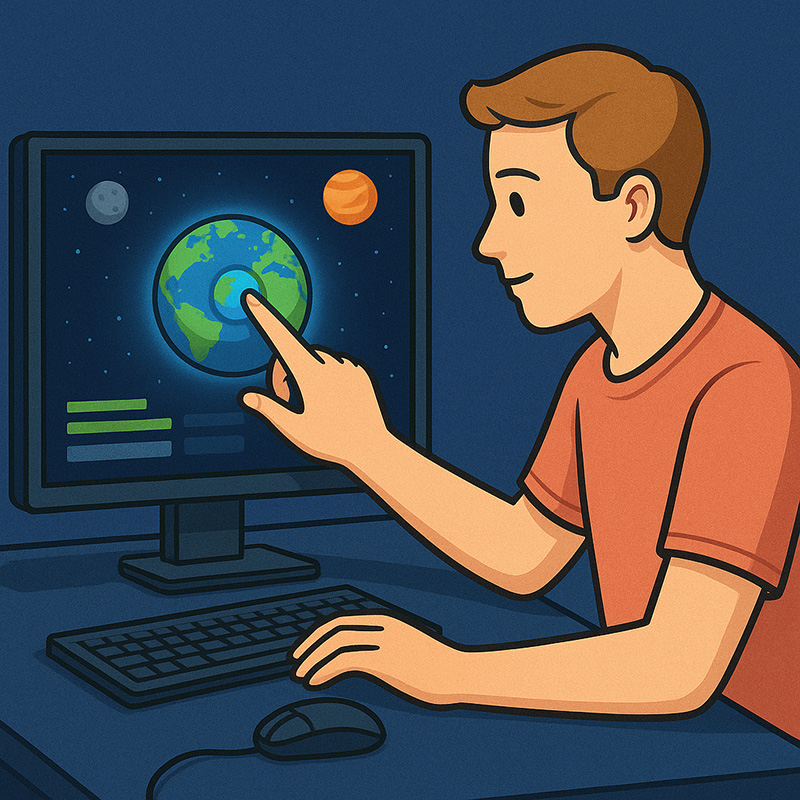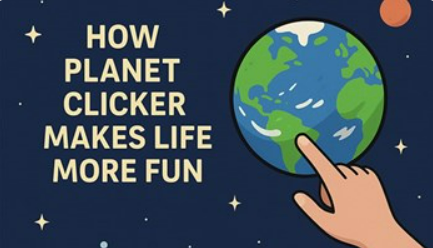A Click That Launched a Thousand Planets
Sometimes, the biggest adventures begin with the smallest actions — like a single click.
Planet Clicker, the addictively simple web game where players gather energy by clicking planets, didn’t arrive with flashy trailers or million-dollar marketing campaigns. It just showed up one day on Coolmath Games, quietly inviting players to explore space through the power of their fingertips.
And somehow… it worked.

Millions of clicks later, Planet Clicker became a hidden gem of online gaming — a favorite among students, casual gamers, and anyone looking to kill five minutes that somehow turned into fifty.
But where did it come from? Who created it? And why has something so simple captured the imagination of so many?
Let’s take a journey back to where it all began.
The Humble Beginnings of a Galactic Journey
A Game Born in the Quiet Corners of the Internet
Unlike blockbuster titles with massive development teams and launch events, Planet Clicker emerged quietly from the indie scene — most likely created by a small team or a solo developer passionate about idle games. The game appeared around 2021–2022 on CoolmathGames.com, a well-known website that hosts math-related puzzles and light entertainment, especially popular among school-aged kids in the U.S.
It had no lore, no grand backstory — just planets, energy, and your mouse. And that was more than enough.

Inspired by a Genre, Fueled by Curiosity
The clicker/idle genre has deep roots, dating back to games like Cookie Clicker and Adventure Capitalist. But Planet Clicker added a delightful twist: instead of baking cookies or building empires, you were building a universe.
Every new planet unlocked was a tiny dopamine hit. The visual upgrades, the increasing energy output, and the expanding cosmic view created a feeling of progression that felt deeply satisfying — even if you weren’t sure why you couldn’t stop clicking.
It was a minimalist masterpiece, using the simplest mechanics to tap into something universal: the joy of discovery and growth.
The Secret to Its Success
Accessibility Meets Aesthetic
One of the biggest reasons for the game’s popularity? You could play it anywhere.
No installs. No accounts. Just open a browser and start clicking. Whether you were bored in a classroom, taking a break at work, or winding down at night, Planet Clicker was always ready for a short (or not-so-short) escape.
The graphics, while not extravagant, were charming — planets with subtle animations, glowing effects, and a clean, modern interface that made you feel like you were truly expanding a digital universe.

Stress-Free Fun in a Click-Hungry World
In a world filled with hyper-competitive multiplayer games and never-ending battle passes, Planet Clicker was a refreshing break. No pressure. No leaderboard. Just you, the cosmos, and the steady rhythm of clicks.
Ironically, this lack of pressure is exactly what made the game so addictive. It didn’t demand your attention — it gently invited it.
Planet Clicker Today: A Quiet Legacy
While the developer(s) of Planet Clicker remain anonymous, their creation lives on through countless hours of casual fun. A second version, Planet Clicker 2, has since been released, offering new planets, improved visuals, and auto-clicking upgrades that let players idle their way to the stars even faster.
Still, the original holds a special charm. It reminds us that not every game needs a budget or a backstory. Sometimes, a good idea, paired with good design, is all it takes.
Conclusion: The Magic of Small Ideas
Planet Clicker is proof that in the vast galaxy of online games, the simplest stars can shine the brightest.
It wasn’t created to dominate charts. It wasn’t built to sell millions. It was likely born from a small spark of creativity — the kind that whispers, “What if clicking a planet gave you energy to unlock more planets?”
And with that one idea, a mini universe was born — and we’ve been clicking ever since.
Related Post

How Planet Clicker Makes Life More Fun (Yes, Really)
Discover how Planet Clicker adds fun to daily life—relax solo, compete with friends, and turn simple clicks into moments of joy and connection.

A Click That Launched a Thousand Planets
Discover the origin of Planet Clicker — a simple yet addictive game where one click starts a cosmic journey. No installs, just fun.

Your Journey Begins with a Click
Master Planet Clicker with smart strategies! Learn how to generate energy, unlock planets, and build your cosmic empire—one click at a time.
